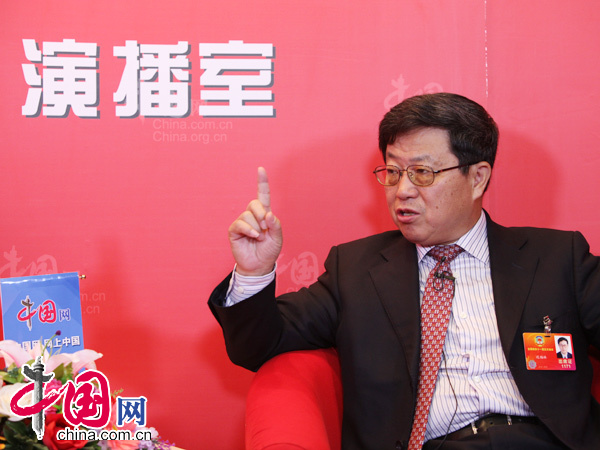A 'golden' transformation
A more open market and structural reforms will help China achieve equitable and sustainable development
|
|
|
Chi Fulin [China.org.cn] |
The world economy is witnessing profound and complex changes, and both developed and emerging economies are in a critical period of economic transformation.
China faces four major challenges: first, it needs a market that can play its role to a greater extent, but one which is effectively regulated; second, it needs sustainable, not GDP-oriented, growth; third, it needs the government to efficiently facilitate growth, rather than lead it; and fourth, it needs wider international cooperation and exchanges.
Over the next few years, there will be three general trends as China seeks to address these.
The first trend will be accelerated urbanizing of the rural population. China's new leaders have repeatedly emphasized that urbanization is the largest potential driver for future development, and advancing a new-type of urbanization, one not focused on the size of cities, is one of the priority areas for cooperation between China and the European Union. Later this year, the government is expected to issue a master plan for advancing urbanization at the rate of 1 to 1.2 percent a year.
Why has urbanization become an important strategic choice in China?
Because there is huge potential for more urbanization. While the urbanization rate was officially 52.6 percent last rear, China's real urbanization rate is around 35 percent if rural migrant workers are not included. The middle-income group makes up only 23 percent of the total population, which is much lower than it should be.
If China's urbanization of the rural population proceeds at the rate of 1 to 1.2 percent a year over the next decade, then its urbanization rate will be more than 60 percent, and with adequate breakthroughs in institutional reforms and in the deepening of income distribution reforms, the middle-income group can be swelled to 40 percent of the population, which will be around 600 million people. Thus, China will achieve the desired goal of an olive-shaped society.
With a growing middle-income group, the second trend will be the releasing of more domestic consumption. China's potential domestic demand is huge. It is predicted that the total amount of potential demand could be about 50 trillion yuan ($8.1 trillion) by 2020. In view of the induced investment demand, the total domestic demand may well be close to 100 trillion yuan.
Releasing this demand will support an annual growth rate of 7 to 8 percent over the next decade. According to preliminary calculations, every 1 percent of consumption growth in China produces a 0.76 percent rise in the country's economic growth rate. Between 2012 and 2020, the actual growth rate of household consumption in China is expected to be between 7.66 percent and 8.92 percent, which will, together with other drivers, enable the economy to grow at an annual rate of between 7 to 8 percent.
Releasing more domestic demand will boost the volume of imports. According to some estimates, the total value of imports will be around $20 trillion in the next decade, which would be almost twice as large as the $11 trillion in the previous 13 years from 2000 to 2012.
The third trend is the deepening of market-oriented reforms. Later this year, the government is expected to issue a master plan for reform over the next few years. Further reforms offer the largest dividend for China's development, because reforms focusing on streamlining the relationship between the government and market will further stimulate the creativity and vitality of market players.
In the next two to three years, the government will delegate more power to the market, reduce the number of items subject to administrative approval, open monopolistic sectors to private capital, loosen the administrative regulation of the pricing of resources, and restrain administrative power by reducing administrative intervention through industrial policies, introduce market-oriented reforms of interest rates and reform the taxation and fiscal systems.
In short, by continuously advancing its economic transition and releasing the dividend of reforms, China may well create another "golden decade", one of equitable and sustainable development.This is a desirable goal not only for China but also for the rest of the world.
The author is president of the China Institute for Reform and Development.


